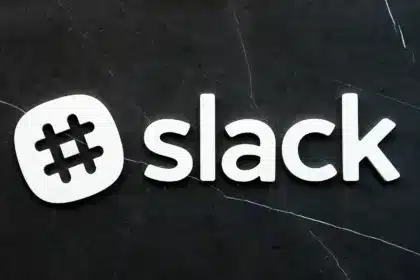What is Project Management Platform?
Project management platforms are digital tools that are designed to help individuals and teams organize, track, and collaborate on their work or projects. They provide an efficient way to plan and break down projects by creating projects, defining tasks, setting deadlines, and assigning responsibilities.
Tasks can be moved through different stages to showcase how work is progressing, and teams can communicate within projects, share files, and leave comments on tasks. Platforms can help allocate resources, track time spent on tasks, and avoid overwork. Everyone involved in a project can see the progress and understand their responsibilities, improving transparency and accountability.

There are many different work management platforms available, each with their own strengths and weaknesses. Some popular examples include:
- Asana: Focuses on task management and goal setting.
- Trello: Uses a Kanban board system for visual workflow management.
- Monday.com: Highly customizable with a wide range of features.
- Jira: Powerful platform specifically designed for agile software development.
Let’s take a closer look at Asana, a task management platform:
Asana
Asana is a web and mobile platform designed to help teams organize, track, and manage their work. It’s a popular choice for teams of all sizes, from small startups to large enterprises. Asana is one of the best task management platforms in the market.
How does Asana work?
Asana is based on the concept of projects and tasks. You can create projects for anything you’re working on, such as a marketing campaign, a software launch, or even a family vacation. Then, you can break down each project into smaller tasks. Once you have your tasks, you can assign them to team members, set due dates, and add attachments. You can also track the progress of tasks and projects and see how your team is doing overall.
Asana’s Features:
- Tasks and projects: Create, assign, and track tasks and projects of all sizes.
- Goals: Set company-wide goals and track progress towards them.
- Communication: Keep your team in sync with comments, discussions, and @mentions.
- Reporting and insights: Get real-time insights into your team’s work and identify areas for improvement.
- Mobile apps: Stay on top of your work with Asana’s mobile apps for iOS and Android.
Asana’s Pricing:
Asana has a free plan for teams with up to 15 members. Paid plans start at $10.99 per user per month.
Note: pricing might be changed, click here to see the current plan and pricing.
Asana’s Strengths:
- Task Management Prowess: Intuitive task creation, assignment, and tracking with clear deadlines and dependencies. Streamlines workflows and keeps teams on track.
- Goal Setting and Reporting: Define company-wide or individual goals and track progress through visual dashboards and reports. Fosters accountability and data-driven decision-making.
- Collaboration Champion: Built-in communication tools like comments, discussions, and @mentions facilitate seamless team collaboration within projects.
- Mobile Agility: Stay on top of work and manage tasks on the go with Asana’s mobile app for iOS and Android.
- Free Tier for Small Teams: Offers a free plan with essential features for up to 15 users, making it accessible for startups and small businesses.
Asana’s Weaknesses:
- Limited Visual Appeal: Interface can feel text-heavy and less visually engaging compared to platforms like Trello or Monday.com.
- Agile Features Lacking: Doesn’t offer dedicated features for sprints, bugs, or advanced agile methodologies like Jira. Better suited for general project management than pure software development.
- Pricing for Larger Teams: Paid plans can become expensive for larger teams compared to some competitors, potentially causing scalability concerns.
- Steeper Learning Curve: Advanced features like automations and custom fields might require some initial training or user guide exploration.
- Integration Limitations: While offering several integrations, may lack specific connections needed by certain teams or industries.
Trello: A Kanban Powerhouse for Visual Workflow Management
Trello is a work management platform that uses the Kanban system. It is a great tool for organizing and tracking projects, tasks, and ideas.
How it Works:
Trello visualizes your workflow by using boards, lists, and cards. A board represents a whiteboard divided into columns with each column representing a different stage of your workflow (e.g. To Do, In Progress, Done). Within each board, you have lists that further categorize tasks based on priority, team, or project. Each task is represented by a card within a list. Cards can contain information such as descriptions, due dates, attachments, comments, and assignees.
Features:
- Visual Workflow: Drag and drop cards between lists to update task progress and visualize workflow.
- Team Collaboration: Assign tasks, leave comments, and mention team members for collaboration.
- Power-Ups: Extend Trello’s functionality with third-party integrations like Gmail, Dropbox, and Slack.
- Automation: Set up automated rules to move cards, send notifications, and streamline workflows.
- Mobile Apps: Manage your work on the go with mobile apps for iOS and Android.
Pricing:
Trello offers three pricing options:
- Free plan: Provides unlimited personal boards, up to 10 team boards, and 10 MB per file attachment.
- Standard plan: Costs $9.99/user/month and removes file attachment limits, adds unlimited Power-Ups, and includes priority support.
- Premium plan: Costs $17.99/user/month and adds custom fields, board templates, unlimited guests, and more.
Note: pricing might be changed, click here to see the current plan and pricing.
Strengths:
- Simple and visual: Easy to learn and use, perfect for visual learners.
- Flexible and adaptable: Suitable for various projects and workflows.
- Collaborative: Facilitate team communication and task management.
- Power-Ups and automation: Extend functionality and improve efficiency.
Weaknesses:
- Limited built-in features: May need Power-Ups for essential features like reporting and time tracking.
- Less structured than other platforms: Can lead to disorganization if not managed properly.
- May not be suitable for complex projects: Lacks advanced features for intricate workflows.
Overall, Trello is a great choice for teams and individuals who prefer a visual and flexible approach to project management.
Monday
Monday.com is a highly customizable work management platform designed to suit the needs of various teams and projects. Here’s a breakdown of its key aspects:
How it works:
- Create boards: Define your projects, departments, or processes by constructing separate boards.
- Add tasks: Break down each project into actionable tasks, setting deadlines and assigning individuals or teams.
- Visualize workflow: Move tasks through different stages using Kanban boards, track progress on timelines, or plan with Gantt charts.
- Collaborate: Team members can discuss tasks, share files, and provide feedback directly on the boards.
- Automate processes: Repetitive tasks can be automated, like sending notifications, assigning updates, or moving completed tasks to specific sections.
Features:
- Highly customizable boards: Adapt to any workflow with various views, columns, and automations.
- Collaboration tools: Built-in communication features, file sharing, and task discussions.
- Integrations: Connects with numerous tools like Slack, Dropbox, Google Drive, and more.
- Dashboards and reports: Track progress, analyze data, and gain insights with visual dashboards and reports.
- Mobile app: Manage projects and tasks on the go with the mobile app.
Pricing:
- Free plan: Up to 2 users, limited features.
- Basic plan: $8/user/month, essential features and integrations.
- Pro plan: $10/user/month, advanced features and automations.
- Enterprise plan: Custom pricing for large teams and complex needs.
Note: pricing might be changed, click here to see the current plan and pricing.
Strengths:
- Highly customizable: Adapts to diverse workflows and team needs.
- Visual and intuitive: Easy to learn and use, even for non-technical users.
- Powerful automations: Saves time and improves efficiency.
- Strong collaboration features: Promotes teamwork and transparency.
Weaknesses:
- Potential for complexity: Over-customization can overwhelm users.
- Steeper learning curve than some alternatives: Can take time to master advanced features.
- Higher pricing for larger teams: Can be expensive compared to other platforms.
Monday.com is a versatile and powerful work management platform ideal for teams seeking a highly customizable and visual solution. Its strengths lie in its adaptability, collaboration features, and automation capabilities. However, the potential for complexity and higher pricing might necessitate careful consideration for smaller teams or those looking for a simple, task-oriented platform.
Jira: Powerhouse for Agile Software Development
Jira is a leading issue tracking and project management platform designed specifically for agile software development teams. It offers a robust set of features to efficiently manage bugs, tasks, workflows, and releases.
How it Works:
- Projects: Organize work into projects, representing specific software development initiatives.
- Issues: Break down work into discrete issues, representing bugs, features, or tasks.
- Sprints: Divide project work into time-boxed iterations called sprints, focusing on completing specific goals.
- Boards: Visualize workflow using Kanban boards where issues move through various stages (e.g., To Do, In Progress, Done).
- Backlog: Prioritize and manage future work with a backlog of issues waiting to be addressed in future sprints.
Features:
- Agile Workflows: Support various agile methodologies like Scrum and Kanban.
- Issue Tracking: Create, track, and prioritize issues with detailed information and attachments.
- Sprint Planning and Management: Plan sprints, assign tasks, and monitor progress towards sprint goals.
- Reporting and Dashboards: Generate reports and visualize key metrics to track team performance and project progress.
- Customizable Workflows: Adapt Jira to your team’s specific needs and processes.
- Integrations: Connect Jira with various tools and platforms for a streamlined workflow.
Pricing:
- Free plan: Up to 10 users, limited features.
- Standard plan: $10/user/month, additional features and storage.
- Premium plan: $17/user/month, advanced features and integrations.
- Enterprise plan: Custom pricing for large-scale deployments.
Note: pricing might be changed, click here to see the current plan and pricing.
Strengths:
- Tailored for Agile: Offers robust features and workflows specifically for agile software development.
- Scalability: Handles large projects and teams effectively.
- Customization: Adapt Jira to your team’s unique needs and processes.
- Integrations: Connects with various tools for a seamless workflow.
Weaknesses:
- Steep learning curve: Can be complex for users unfamiliar with agile methodologies.
- Less user-friendly than some alternatives: Interface might feel overwhelming for non-technical users.
- Higher pricing: Can be expensive for small teams compared to other options.
Overall, Jira is the go-to platform for agile software development teams seeking a powerful and feature-rich solution. Its focus on agile workflows, issue tracking, and sprint management makes it ideal for managing complex software projects. However, its steep learning curve and higher pricing might not be suitable for smaller teams or those not using agile methodologies.
How to Choose the Right Platform?
Choosing the right platform depends on your specific needs and preferences. Consider factors such as:
- The size and type of your team: Small teams might do well with a simple platform like Trello, while large teams might need a more robust solution like Asana.
- The nature of your work: If you work on complex projects with many dependencies, you might need a platform with advanced features like Gantt charts and reporting.
- Your budget: There are free and paid work management platforms available, so find one that fits your financial constraints.
The best choice depends on your specific needs and preferences. Consider how complex your projects are, how your team works, and what features are most important to you. Both platforms offer free plans, so it’s worth trying them both out before making a decision.











